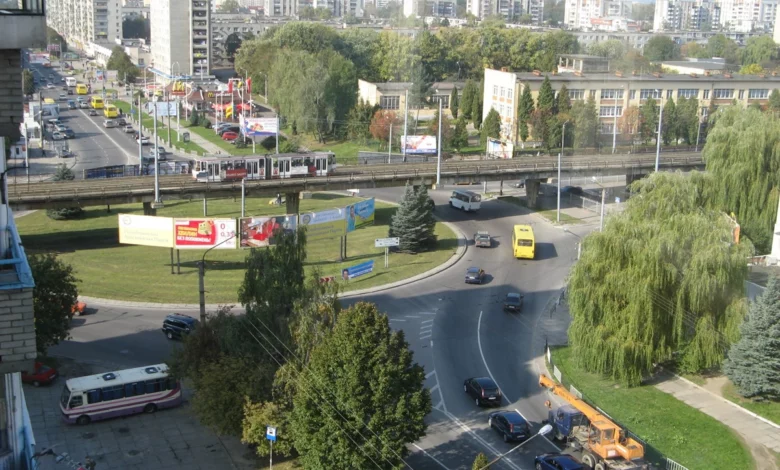
The inspections continued during the first quarter of 2024.
During the first quarter of 2024, employees of the chemical laboratory of the Municipal Enterprise “Administrative and Technical Department” monitored the state of the atmospheric air at 37 intersections of the Lviv community.
The measurements were carried out to determine air pollution by emissions from motor vehicles, namely carbon monoxide, nitrogen oxide, nitrogen dioxide, and sulfur dioxide. As a result of the measurements, 13 intersections out of 37 surveyed did not exceed any of the indicators.
Thus, the cleanest intersections with no exceedances of air pollution indicators are
Rudno – Ogienka Street – V. Velykyi Street – Sheptytskoho Street (near the pedestrian crossing on Ogienka Street);
intersection at the entrance to the town of Vynnyky – Halytska Street – Doroga Kiltseva Street (at the entrance to the town of Vynnyky);
intersection at the entrance to the village of Lysynychi – Hlynyanskyi Trakt – T. Shevchenko Street;
intersection of Velyki Hrybovychi village – Dublianska street – Dachna street (near the pedestrian crossing on Dublianska street);
intersection of Shpytalna Street – Danylyshyna Street (near the pedestrian crossing from the side of the building No. 7 on Danylyshyna Street);
intersection of Bryukhovychi village – Lvivska street – Vesniana street (near the pedestrian crossing on Lvivska street);
intersection of Sichovykh Striltsiv Street – Hnatiuk Street (near the pedestrian crossing, from the side of the building No. 2 on Sichovykh Striltsiv Street);
intersection of Ryasne-Ruske village – Pidryasne village (from the side of the Ring Road);
intersection of Zelena Street – Konopnytska Street – Petrushevycha Street (near the pedestrian crossing, from the side of the building No. 17 on Zelena Street);
intersection of Havryshkevycha St. – Krakivska St. (near the pedestrian crossing from the side of the building No. 2 on Havryshkevycha St.);
intersection of Horodotska street – Vyhovskoho street (near the pedestrian crossing from the side of the building No. 251 on Horodotska street);
intersection of Doroshenko Street – Slovatskoho Street (near the pedestrian crossing, from the side of the building No. 36 on Doroshenko Street);
intersection of S. Bandera Street – Antonovycha Street – Rusovykh Street (near the pedestrian crossing from the side of the building No. 71 on Antonycha Street).
The most polluted intersections with exceeding the maximum one-time maximum permissible concentration of carbon monoxide and nitrogen dioxide are
intersection of Chervona Kalynya Ave;
intersection of Lypynskoho St. – B. Khmelnytskoho St. (opposite the bus station on B. Khmelnytskoho St., building No. 225);
intersection of Mazepa St. – Mykolaychuk St. (near the pedestrian crossing, from the side of the building No. 7 on Mykolaychuk St.);
intersection of Horodotska Street – Zbyralna Street (opposite the bus station on Horodotska Street);
intersection of Lypynskoho St. – Chornovil Ave. (near the pedestrian crossing, from the side of the building No. 59 on Chornovil Ave;)
intersection of Stryiska street – Sh. Rustaveli street – I. Franko street – Zarytskih street (near the pedestrian crossing on the side of the building
crossing from the side of the building No. 79 to I. Franko str;)
Sakharova Street – Stryiska Street intersection (near the pedestrian crossing, from the entrance to Stryiskyi Park).
“One of the main sources of pollution of the streets and intersections of our city is motor vehicles. The increase in the number of cars in the city not only causes traffic problems, but also negatively affects our air quality. The growth of air pollution levels is especially noticeable at intersections and streets with heavy traffic during peak hours, so the problem of reducing harmful emissions from motor vehicles remains relevant. As we can see from the study, the introduction of the “green wave” within the framework of traffic lights has a positive result, but there are still a number of problematic intersections in the city where work should be done to increase the capacity. Therefore, each of us can contribute to the fight against air pollution by choosing more environmentally friendly ways to move around the city, such as public transport instead of a private car, using a bicycle or simply walking short distances,” said Oksana Viytyk, acting director of the Department of Ecology and Natural Resources.

